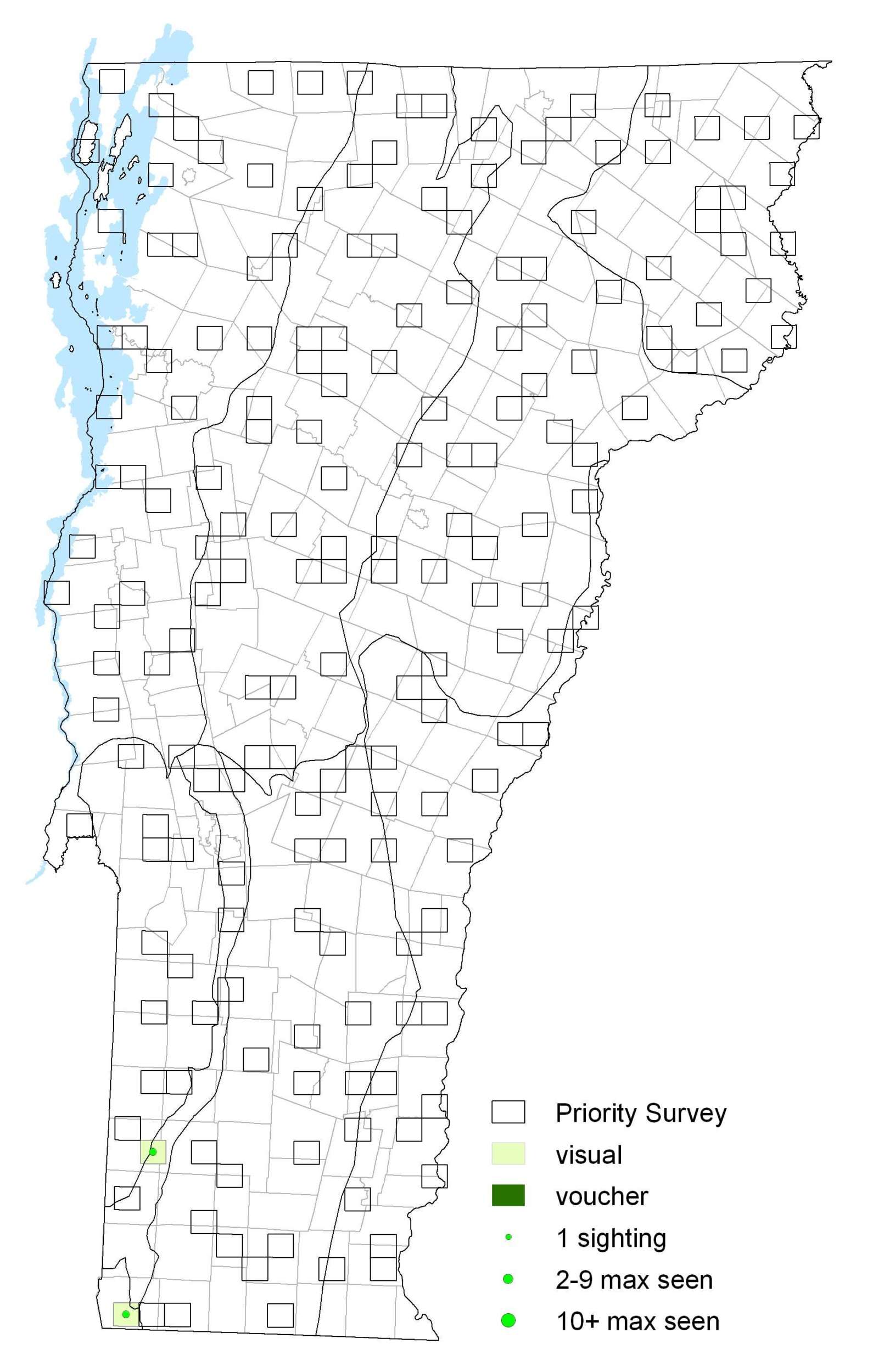|
Resident Conservation Status North American Range |
This is one of our earliest emerging Hesperid, but vanishes quickly after a brief spring flight. Since this butterfly experiences many cool, spring days, it can often be found sunning itself on rocks or large grass patches. It often flies knee-high at the tops of Little Bluestem grass.
Identification
A small but conspicuous skipper. Wings are dark brown or blackish with few light areas. Underside of hindwing has a cobwebbed appearance due to white spots extending along the veins.
Flight
Typically one brood. Two records from Vermont were from early June, though their peak flight period in Massachusetts is early May into early June.
Distribution and Habitat
There were only two records during VBS and no historic records for this butterfly in extreme southwestern Vermont. The Cobweb Skipper was first documented in Vermont on 5 June 2004 in Pownal (K. Hemeon) during the survey. Found in grasslands, old dry fields and open waste places. Host plants are Little Bluestem (Schizachyrium scoparius), and Big Bluestem (Andropogon gerardi). Adult Cobweb Skippers prefer nectar from flowers of low-growing plants such as Labrador Tea (Ledum groenlandicum), Wild Strawberry (Fragaria virginiana), Blackberry (Rubus allegheniensis), Winter Cress (Barbarea vulgaris), and Red Clover (Trifolium pratense).






